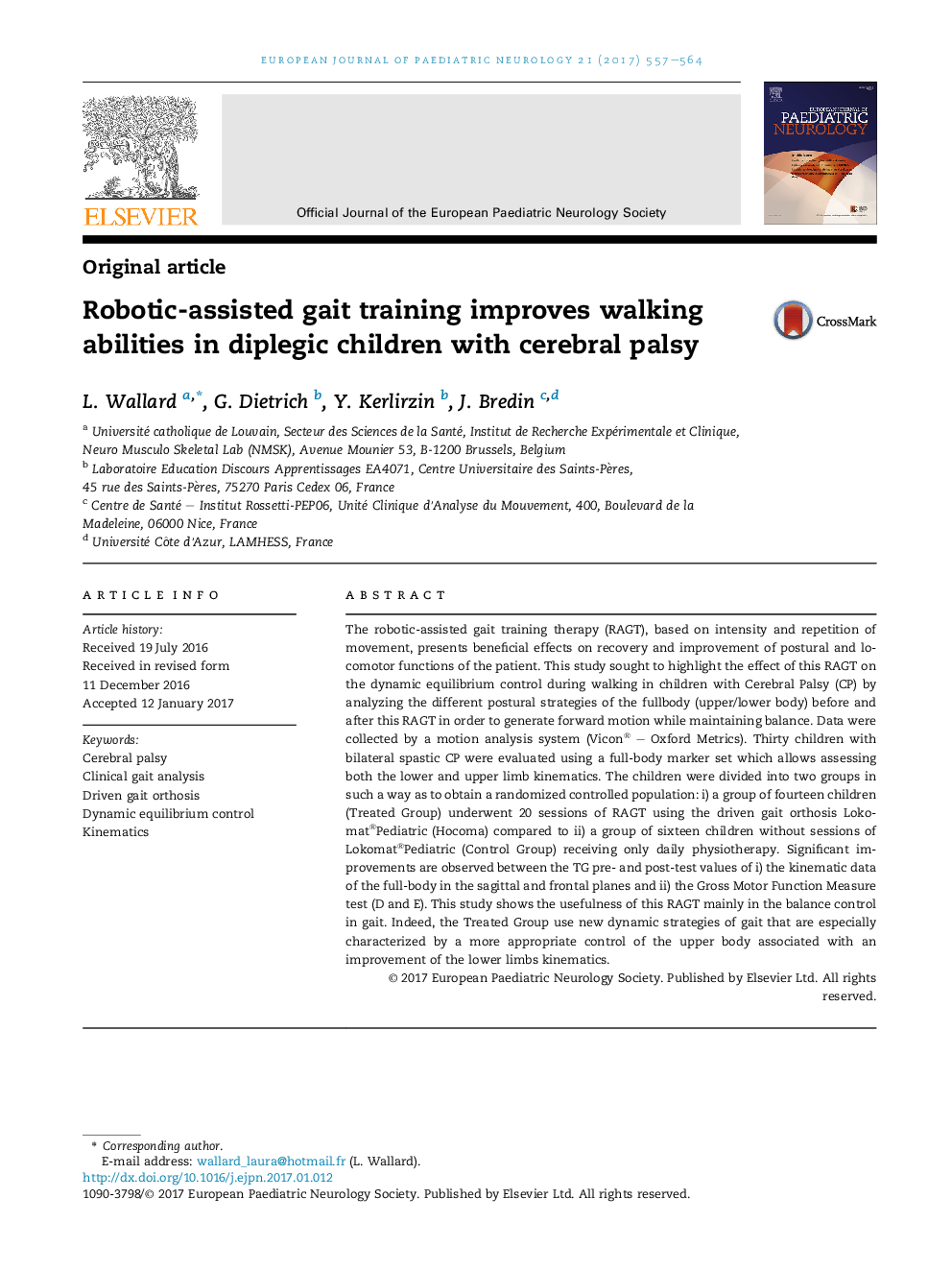| کد مقاله | کد نشریه | سال انتشار | مقاله انگلیسی | نسخه تمام متن |
|---|---|---|---|---|
| 5628889 | 1580000 | 2017 | 8 صفحه PDF | دانلود رایگان |
- We aimed to evidence on dynamic equilibrium control in gait of children with CP.
- We investigated the effect of robotic gait rehabilitation on biomechanical parameters.
- Children use new dynamic strategies of gait after this rehabilitation.
- This rehabilitation seems to be beneficial in enhancing gait in children with CP.
The robotic-assisted gait training therapy (RAGT), based on intensity and repetition of movement, presents beneficial effects on recovery and improvement of postural and locomotor functions of the patient. This study sought to highlight the effect of this RAGT on the dynamic equilibrium control during walking in children with Cerebral Palsy (CP) by analyzing the different postural strategies of the fullbody (upper/lower body) before and after this RAGT in order to generate forward motion while maintaining balance. Data were collected by a motion analysis system (Vicon® - Oxford Metrics). Thirty children with bilateral spastic CP were evaluated using a full-body marker set which allows assessing both the lower and upper limb kinematics. The children were divided into two groups in such a way as to obtain a randomized controlled population: i) a group of fourteen children (Treated Group) underwent 20 sessions of RAGT using the driven gait orthosis Lokomat®Pediatric (Hocoma) compared to ii) a group of sixteen children without sessions of Lokomat®Pediatric (Control Group) receiving only daily physiotherapy. Significant improvements are observed between the TG pre- and post-test values of i) the kinematic data of the full-body in the sagittal and frontal planes and ii) the Gross Motor Function Measure test (D and E). This study shows the usefulness of this RAGT mainly in the balance control in gait. Indeed, the Treated Group use new dynamic strategies of gait that are especially characterized by a more appropriate control of the upper body associated with an improvement of the lower limbs kinematics.
Journal: European Journal of Paediatric Neurology - Volume 21, Issue 3, May 2017, Pages 557-564
